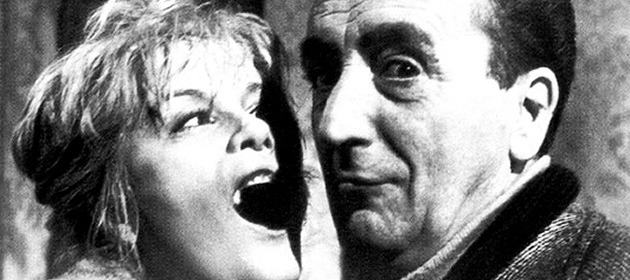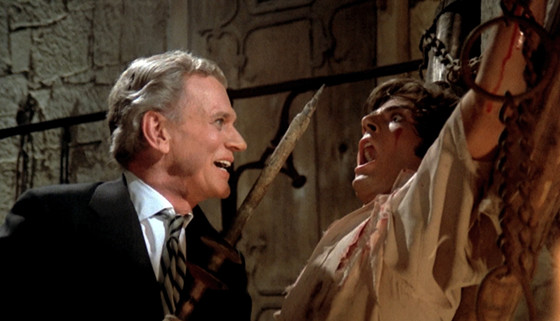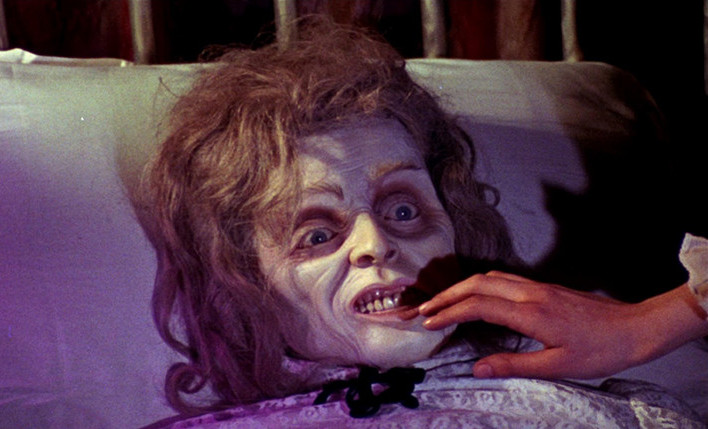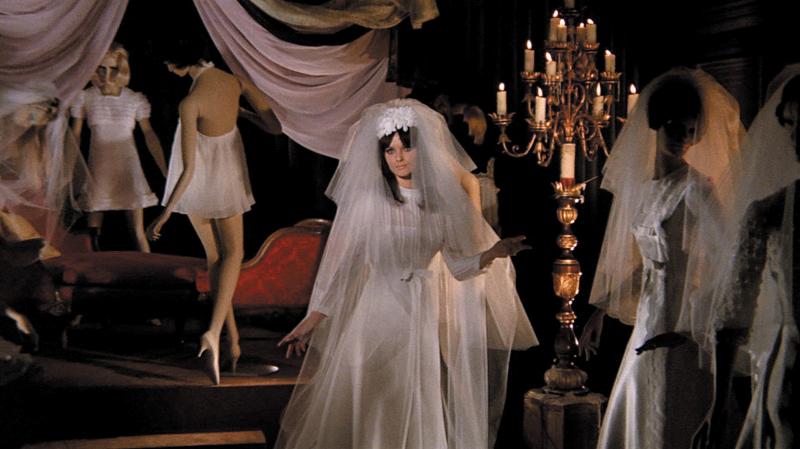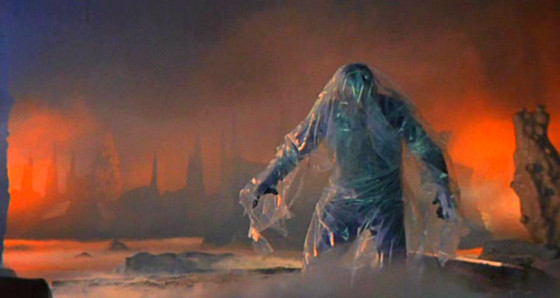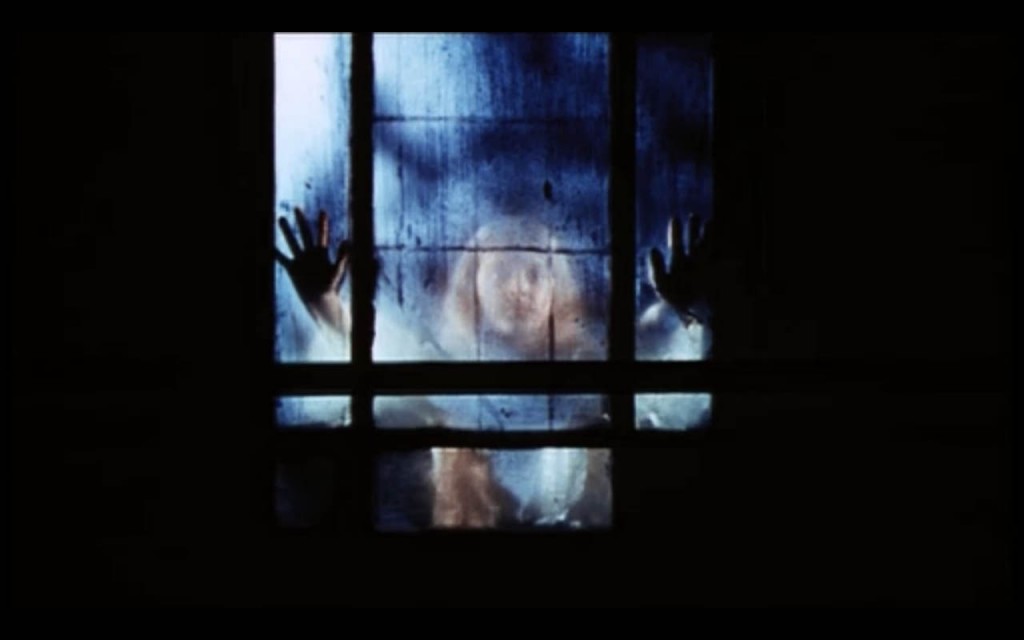Mario Bava (b. 1914—d. 1980) was an Italian filmmaker whose work has influenced that of Martin Scorsese, Quentin Tarantino, and Francis Ford Coppola, among a score of others. He’s also credited with indirectly spawning the slasher film craze of the ’80’s.
Sort of a jack-of-all-trades in the Italian film industry, working as a cinematographer and special effects designer as well as writer, director, and producer, Bava’s mastery of the medium became apparent early on, when he was often called upon to finish the work of directors who had quit or been fired from projects he was helping to shoot, showing an efficiency and adeptness that impressed producers. But it was with Black Sunday that the world came to see just what kind of genius the man possessed.
Although he worked in different genres, including spy films, westerns, and sword-and-sandal epics, it was his horror films that have had the biggest impact on cinema history, which is why I have chosen among those for the content of this list, with one exception: 1974’s Rabid Dogs, a staggering psychological thriller that was technically his last completed film, and much too good to leave off a list of some of his best work.
10. Baron Blood (1972)
The Story:
A young American travels to Austria to have a look at an ancient castle that has been in his family for centuries. It’s former owner was the infamous Baron Blood, a sadistic monster who reveled in the pain he inflicted on his victims, and died under the curse of a witch he tortured to death.
For a laugh the young man and a comely architect (played by Elke Sommer) recite an incantation that brings the Baron back to life, whereupon he begins killing literally everyone he runs into. Around this time a mysterious American businessman (Joseph Cotton) purchases the castle with the intention of renovating it back to its original state. But is this man really who he says he is, and can the young couple stop the revived Baron and his reign of terror?
Why This Film Matters:
In some respects, Baron Blood is almost a remake of Black Sunday, again picking up the idea of the present generation attempting to quell the ongoing destructive influence of its evil forebears. The key difference here is the level of violence which, while not on the scale of some of Bava’s other efforts, is still sufficiently nasty to make the undead Baron seem a formidable monster.
Baron Blood is not the visual marvel some of Bava’s earlier films are, but does come to life whenever the action switches to the interiors and exteriors of the castle, an impressive and imposing edifice perfectly suited for a Gothic-style horror movie. There is also a terrific night time sequence where Ms. Sommer is pursued by the murderous Baron, lit in the colorful phantasmagoric style adored by Bava fans. While seen by some as a weaker Bava effort, and not well-reviewed on its first release, its still creepy, bloody fun, and ultimately led to what might be the director’s most important work.
9. Black Sabbath (1963)
The Story:
A trio of stories, actually. In “The Telephone”, a prostitute receives menacing phone calls from her former pimp, who has just been released from prison. In “The Wurdulak”, a man who has left home to hunt down a vampire returns as one himself, and begins to prey on members of his family. Last but not least, in “The Drop of Water” a nurse steals a valuable ring from the body of a recently deceased woman, only to become plagued by the woman’s angry spirit.
Why This Film Matters:
Italian exploitation films were starting to become kind of a thing in the US in the sixties and seventies, and so American International Pictures entered into a co-producing contract with Italian company Galatea to generate more . Out of this, Black Sabbath was born. Because AIP were putting up a lot of the money, they had some say in terms of the content (the film would, after all, be playing in American theaters).
Onscreen graphic violence, an area where Bava often liked to push the envelope somewhat, had to be cut down to make it more palatable for younger viewers. Even so, when the film was finished it was recut and redubbed for American release to obscure or eliminate some of the more controversial story elements. I’ve actually only seen the original Italian cut (available on most DVD releases) and can only judge the film from that version.
As such, it feels a little uneven, starting with a so-so tale of revenge and murder, then moving on to a creepy and effective period vampire tale starring screen legend Boris Karloff (who also appears in the film’s intro), and finishing with a weird Tales From The Crypt-style story of ghostly vengeance that contains at least one seriously unforgettable visual, namely the levitating, doll-like corpse of the owner of the purloined ring. It’s not, in my opinion, the strongest of Bava’s works, but it’s also very often mentioned in lists of his most significant films, so I’ll follow suit and include it here.
I still consider it worth checking out (most of Bava’s movies are). There’s also no denying the unusual cultural influence it’s had—Quentin Tarantino apparently sited it as a source of inspiration for Pulp Fiction and, of course, there’s a certain legendary rock band whose name wouldn’t be quite so cool if they hadn’t happened to see this movie.
8. Hatchet For The Honeymoon (1970)
The Story:
“A woman should only live until her wedding night, love once, and then die.” A handsome young serial killer with some serious hangups about woman likes to dress women in wedding gowns from his own bridal business and then murder them. Although he burns the bodies up in the incinerator, he still has trouble keeping his activities a secret from his estranged wife and some very interested police detectives.
It’s obvious that he’s harboring heavy baggage from his past, but it’s not until the end that we see the true nature of his madness. Meanwhile, after murdering his wife, he finds himself haunted by her ghost, who is visible to everyone except him. As the police close in and his dead wife taunts him, his carefully constructed facade of sanity begins to fall apart.
Why This Film Matters:
Generally regarded as a lesser Bava effort, this is awfully damn stylish and engrossing for a “lesser” work. The story taps into the spirits of Dostoevsky and Hitchcock by compelling us to see the world through the eyes of a violent psychotic whose powerful, obsessive impulses in this case spring from a terrible childhood trauma. Bava even goes so far as to have us sympathize with the killer to some degree as he struggles to keep his bloody exploits hidden from the police.
As with Planet of the Vampires, he can’t help but inject an element of the supernatural into the story, using it here to dramatize the main character’s suppressed conscience. By the end, what comes through most strongly is a terribly cynical view of married life—the lovely new bride is inevitably destroyed, only to be replaced by a less-appealing, unhappier partner who leaves an everlastingly negative impact on her husband. The husband doesn’t come off much better, seen here as a reckless idealist who fails again and again to relate to women as human beings.
Themeatically, this is probably one of Bava’s richer works, that appears to have more relevance now, in the era of serial killer saturation in popular entertainment, than it did when first released.
7. Planet of the Vampires (1965)
The Story:
A group of astronauts respond to a distress signal emanating from a strange planet. Once they begin their descent, the crew inexplicably begin to attack one another. They eventually come to their senses, but soon after landing they face a new problem: crew members are being killed off by an unseen, unknown presence.
Even worse, the newly buried dead return to life. The discovery of the fossilized crew of an alien spacecraft makes it clear that the distress signal has been luring ships to this world for some time, with the purpose of allowing the disembodied minds of long-stranded beings to inhabit the bodies of the recently deceased. Can the remaining crew escape with their own minds intact, or will they succumb to the will of the alien forces that seek to possess them?
Why This Film Matters:
If you’re a fan of Ridley Scott’s Alien, light a candle for Mario Bava. While Scott and screenwriter Dan O’ Bannon both denied seeing it, Planet of the Vampires was clearly a key influence on their film’s story: a spaceship answers a weird distress call, they come across a giant alien skeleton (reworked as the Navigator in Alien), and male and female crew members are portrayed as being on an equal footing (in a movie from the 1960’s—the women even brawl a little with their male counterparts).
Maybe O’ Bannon saw it once and didn’t remember it? Anyway, it hardly matters; this is candy-coated craziness conjured by Bava out of next to nothing, just a couple of fake rocks left over from another production, artificial fog and his trademark gel-lighting, and he used those bare elements to create an extraterrestrial atmosphere that hovers somewhere between a hallucination and a dream.
After watching this again, I realized what a pity it was that Bava didn’t work in the sci-fi genre more often. His sense of lighting and outrageous staging, not to mention his apparent love of weird things, are perfectly suited for it. He drapes his alien world with vibrant reds and greens and blues, bizarre natural formations and eerie, creeping mists. Not surprisingly, he also infuses his science fiction tale with strong supernatural overtones, complete with zombie astronauts, as if alien creatures just weren’t quite strange enough for him (there are no actual vampires anywhere in the movie, but it does make for a great title). And did I mention the best looking flight suits in movie history, rendered in black leather with yellow piping? Very hip.
6. Kill, Baby, Kill (1966)
The Story:
A coroner in the 19th century visits an isolated village to perform an autopsy on a young woman who leapt to her death. During the autopsy he discovers a coin inserted in her heart. Curious, he begins to ask questions of the townspeople, but only finds himself frustrated by deeply held superstitions.
It becomes clear they fear something terrible, namely the ghost of a little girl that serves as a harbinger of death for anyone who sees her. As more people die, he takes it upon himself to question a local witch about the strange goings-on. Only with her help and that of another doctor does he begin to uncover the truth, though it’s uncertain whether there is still time to change the tide of death.
Why This Film Matters:
Martin Scorsese has called this Bava’s best film. While I’m not sure I agree with him (for me the blue ribbon goes to either Blood and Black Lace, Lisa and the Devil, or Rabid Dogs, the latter two being films we’ll discuss in just a moment), I will say that it’s probably the most successful realizations of Gothic-horror-meets-bad-acid-trip ever committed to film.
Don’t get me wrong, the unrealism is fairly understated, but it comes out spinning on Bava’s kaleidoscopic color wheel, set in a village that always seems weirdly out-of-whack, seeming to twist in on itself like a town in a dream, spurred perhaps by the crushing level of fear experienced by the inhabitants. Fear was a favorite subject of Bava’s, and here he depicts a municipal reign of terror brought on, in many ways, by the mere idea of death, personified in the body of a ghostly little girl dressed in white. The irony is intriguing—what scares these people most is what, on the surface, shouldn’t frighten them at all, a visual distillation of childhood innocence.
In keeping with Bava’s fundamental distrust of human nature (which became more pronounced in his work in later years), the story shows this innocence being maneuvered to corrupt ends by the less-than-noble desires of a vengeful adult. And, of course, we see Bava’s ongoing obsession with people being haunted by the sins of the past. Those who’ve seen Coppola’s Dracula will recognize a swingset POV shot he lifted from this film. Probably one of Bava’s most fast-paced and engaging stories.
